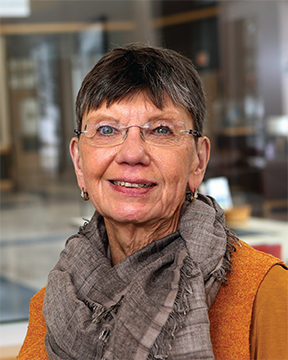“Since you are an integral part of a social system, let every act of yours contribute to the harmonization of social life. Any action that is not related directly or remotely
to this social aim disturbs your life and destroys your unity.”
~ Marcus Aurelius
I am in my home office on Boxing Day (the Canadians amongst our readership will get that) reflecting on the privilege of writing the Editor’s Corner for LipidSpin. It allows me time to synthesize the very special articles which have been submitted with thoughtfulness, insight, and a real desire to educate us all, by authors from each regional chapter, and in doing so, create a broader context through which they can be viewed. I believe that is what Marcus Aurelius is alluding to in the quote above–how do we see each situation in which we take part, as part of a larger framework?
This edition of LipidSpin is dedicated to an awareness of challenges in rural healthcare in America. Rural life may be typically depicted as one to emulate, to revere as being basic and fundamental to our culture, bucolic and peaceful, quintessential to the American lifestyle. While it may be all that, we see here the frayed parts of the fabric as well, as we should if we are to be realistic about our contemporary culture.
We have focused on disparities and inequities that are particularly notable in the rural communities. First, we are helped to understand what ‘rural’ means, what part of our population in this country lives in that space. From there, we are informed as to the challenges specifically inherent in addressing prevention of cardiovascular disease in the setting of scarcity and distance.
We are led to explore the rural environment from coast to coast, across varying healthcare systems which have their own cultural challenges, through the spectrum of age ranges from pediatrics to adults. We are also given a focus on individuals who have made a difference in bridging the gaps described, and the importance of acting together as a community to address concerns in this environment.
It is not too different in the whole from what I suspect each of us in our respective environments, rural and urban, are experiencing now, in terms of addressing scarcity and cultural differences. As we refer to ‘social determinants of health’ perhaps we should develop another parallel category of ‘rural determinants of health’, and study how those factors impact care.
We each are challenged to provide high quality care for patients with cardiovascular disease and related comorbidities in the setting of unprecedented nursing staff shortages, reduced supply of many services we have considered basic and integral, while at the same time the demand for care for the critically ill in our emergency departments and intensive care units is at a peak. In the process of functioning in our current world it is necessary for us to risk stratify patients in new and more complex ways and escalate the use of technology to help us prioritize intelligently.
The NLA is a cohesive organization with a common aim towards reducing cardiovascular disease, in any setting, and in any era. It behooves us now to think ‘out of the box’ in terms of how we provide care and recognize our integral roles as part of our larger social community.





.jpg)
.png)











